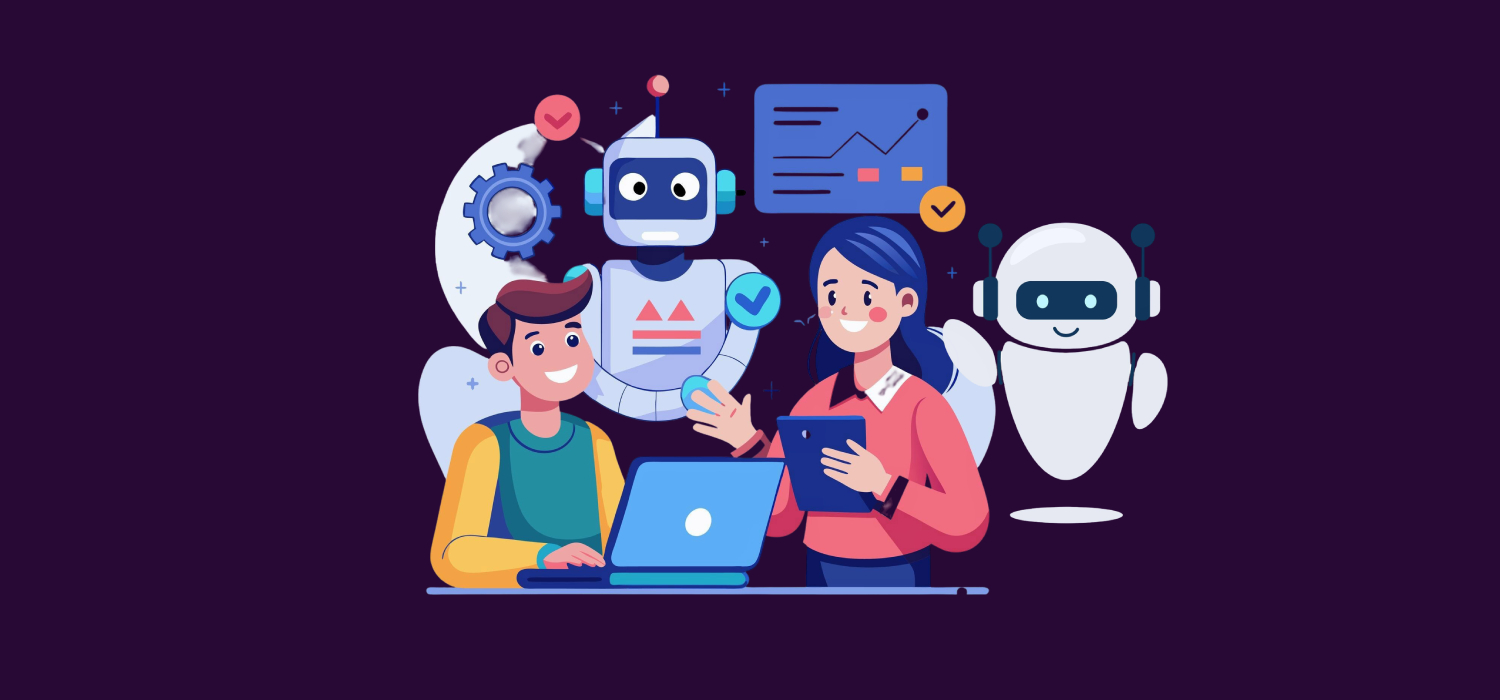How Generative AI Is Transforming RPA in 2025: A Guide for USA Enterprises?
In 2025, USA enterprises face mounting pressures to streamline operations amid complex regulatory landscapes and evolving customer demands. Robotic Process Automation has long served as a backbone for handling repetitive tasks, but its integration with Generative AI marks a pivotal shift.
This fusion, often termed Generative AI automation, elevates RPA from rule-based execution to intelligent, adaptive workflows.
Over 50% of C-level executives have recognized key operational processes that can be optimized or automated through intelligent automation. (Strategic Market Research)
For automation in USA enterprises, this means moving beyond scripted bots to systems that generate insights and decisions in real time.
What Defines RPA and Generative AI in Today’s Enterprise Landscape?
RPA technology deploys software robots, also known as “bots”, that copy human actions to perform repetitive tasks such as data entry or invoice processing. Traditionally, these bots follow predefined rules, excelling in structured environments but faltering with variability.
Generative AI, on the other hand, creates new content or solutions from patterns in data, such as drafting reports or simulating scenarios. RPA and Generative AI working together form a hybrid where bots not only automate but also innovate. This duo addresses the need for scalable automation in USA enterprises by enabling bots to interpret unstructured data, like emails or contracts, without constant human tweaks.
Consider a procurement team: RPA extracts vendor details from forms, while Generative AI generates negotiation scripts tailored to market conditions. This synergy reduces manual oversight, allowing focus on strategic priorities.
How Does Generative AI Augment RPA’s Core Functions?
Generative AI injects creativity into RPA’s rigid framework, transforming static automation into dynamic processes. Here’s how it unfolds:
Dynamic Decision-Making
RPA bots traditionally halt at anomalies; Generative AI analyzes context to suggest resolutions, such as rerouting a delayed shipment based on predictive text generation from logistics logs.
Content Generation at Scale
For customer service, RPA handles ticket routing, but Generative AI drafts personalized responses, pulling from knowledge bases to ensure compliance with USA data privacy laws like CCPA.
Process Optimization Loops
AI models learn from RPA execution logs, generating refined workflows. A finance department might see bots auto-adjust reconciliation rules after AI simulates error-prone scenarios.
This Generative AI automation empowers USA enterprises to handle volume spikes, like end-of-quarter reporting, with minimal intervention.
| RPA Alone | RPA with Generative AI |
| Fixed scripts for data extraction | Adaptive extraction from varied formats (e.g., handwritten notes via AI interpretation) |
| Error alerts requiring human fix | Auto-generated correction paths with rationale |
| Batch processing only | Real-time, context-aware adjustments |
Which USA Enterprise Processes Gain the Most from This Integration?
By 2025, 90% of RPA vendors are predicted to offer generative AI-assisted automation features. (Gartner)
Not all workflows suit RPA and Generative AI equally. Those with high variability and knowledge intensity yield the greatest returns for Automation in USA Enterprises. Key areas include:
Supply Chain Management
- Forecasting disruptions: Generative AI creates scenario plans from RPA-gathered supplier data.
- Inventory adjustments: Bots simulate demand curves to optimize stock levels.
Human Resources
- Resume screening: RPA parses applications; AI generates candidate summaries highlighting cultural fit.
- Policy updates: Automated drafting of compliance documents aligned with evolving labor laws.
Compliance and Risk
- Audit trail creation: Generative AI weaves RPA-extracted logs into narrative reports for SEC filings.
- Fraud detection: Bots flag patterns, while AI hypothesizes evasion tactics for proactive measures.
In other sectors like healthcare, finance, etc., where precision meets ambiguity, this approach ensures robust governance without stifling agility.

How Should USA Enterprises Roll Out RPA Enhanced by Generative AI?
Implementation demands a phased strategy tailored to organizational maturity. Begin with assessment:
1.Map current RPA deployments to identify augmentation opportunities.
2. Select AI models compatible with existing bots, prioritizing those fine-tuned for domain-specific tasks.
3. Build hybrid teams: Information Technology for integration, domain experts for validation.
Deployment Tips
- Use low-code platforms for rapid prototyping.
- Embed monitoring dashboards to track AI contributions to RPA efficiency.
- Foster a culture of experimentation, rewarding innovations in Generative AI automation.
For multinational USA enterprises, prioritize cloud-based solutions to comply with federal data sovereignty rules.
Conclusion
The convergence of RPA and Generative AI in 2025 redefines automation in USA enterprises, turning routine operations into intelligent ecosystems. By embracing this transformation, organizations gain resilience against uncertainty, fostering innovation from the ground up. While challenges persist, the path forward lies in deliberate integration, starting small, scaling smart. USA enterprises that lead this charge will not just automate tasks but orchestrate futures.
FAQs
What distinguishes RPA and Generative AI from traditional automation tools?
RPA executes predefined actions, while Generative AI creates novel outputs like text or strategies, enabling adaptive workflows beyond rigid scripting.
How does Generative AI automation impact compliance in USA enterprises?
It generates audit-ready documentation from RPA data, ensuring adherence to regulations like GDPR equivalents, but requires built-in bias checks.
Can small USA enterprises afford RPA integrated with Generative AI?
Yes, through scalable SaaS models that minimize upfront costs, allowing phased adoption without overhauling infrastructure.
What role does human oversight play in this setup?
Humans validate AI-generated decisions, refine models via feedback loops, and handle edge cases, maintaining accountability.
How future-proof is this RPA and Generative AI combination?
It evolves with AI advancements, supporting emerging needs like multimodal inputs (e.g., voice-to-task conversion) for long-term viability.

 contact
contact

 By
By 


